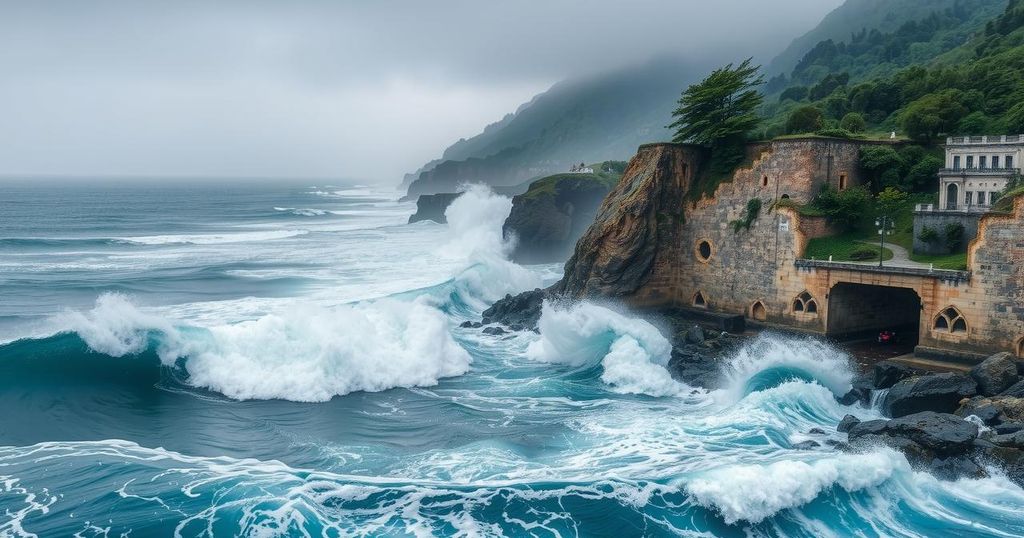Peru and Ecuador are currently facing devastating effects from unusually high waves reaching up to 13 feet, impacting coastal communities and resulting in the closure of numerous seaports. This phenomenon is attributed to climate change and has prompted government warnings, alongside rescue operations for stranded fishermen. The aftermath includes significant losses in local businesses and confirmed fatalities in Ecuador, with Peru not reporting any deaths as of now.
Authorities in Peru and Ecuador are advising the public to avoid coastal areas as unusually large waves wreak havoc along the shoreline, with waves reaching heights up to 13 feet (4 meters). This calamitous event began on Christmas Day and peaked on December 27 and 28, with forecasts indicating potential continuance until January 4. In response to the situation, Peru has closed approximately 100 out of its 121 seaports, with the northern regions being particularly affected.
The high waves have devastated numerous small fishing communities and popular tourist destinations, leading to flooding in some areas, including Callao. The Peruvian Navy reported the rescue of 30 fishermen trapped offshore, although an estimated 100 to 180 fishermen remain stranded at sea. One community in Peru reported a significant loss, with at least 100 boats destroyed. Navy Captain Enrique Varea has alerted that the current wave conditions may worsen, stating, “the waves might continue to intensify.”
Meteorologists attribute these extreme weather conditions to climate change, with civil defense officials explaining that a combination of strong winds from as distant as the United States and abnormal tide patterns are responsible for the current wave situation. They explicitly denied claims of a rare tsunami. The ongoing weather events are predicted to recur as global temperatures rise. Prior to this event, Peru also declared an environmental emergency due to an oil spill that contaminated approximately 10,000 square meters of ocean, impacting local wildlife and several beaches.
The holiday season typically draws many visitors to coastal resorts; however, the overwhelming waves have caused widespread damage and disrupted businesses. Tragically, Ecuador has reported two fatalities linked to the waves, with an additional body discovered on a Chilean beach. As of now, Peru has not confirmed any wave-related deaths.
This article revolves around the severe coastal conditions impacting Peru and Ecuador due to exceptionally high waves attributed to climate-related phenomena. It highlights the extensive effects on fishing communities, infrastructure, and local tourism, while underscoring the government’s response to the emerging crisis. The phenomenon’s relation to broader climate change issues is also assessed, showing the connection between unusual weather patterns and ongoing global environmental changes.
In summary, the severe coastal wave phenomenon affecting Peru and Ecuador has resulted in significant challenges for both nations, prompting governmental interventions and raising concerns related to climate change. As high waves disrupt local economies and pose risks to safety, continued monitoring and response efforts will be crucial in the upcoming days. The incident serves as a reminder of the urgent need to address climate resilience and adaptability in vulnerable regions.
Original Source: maritime-executive.com






